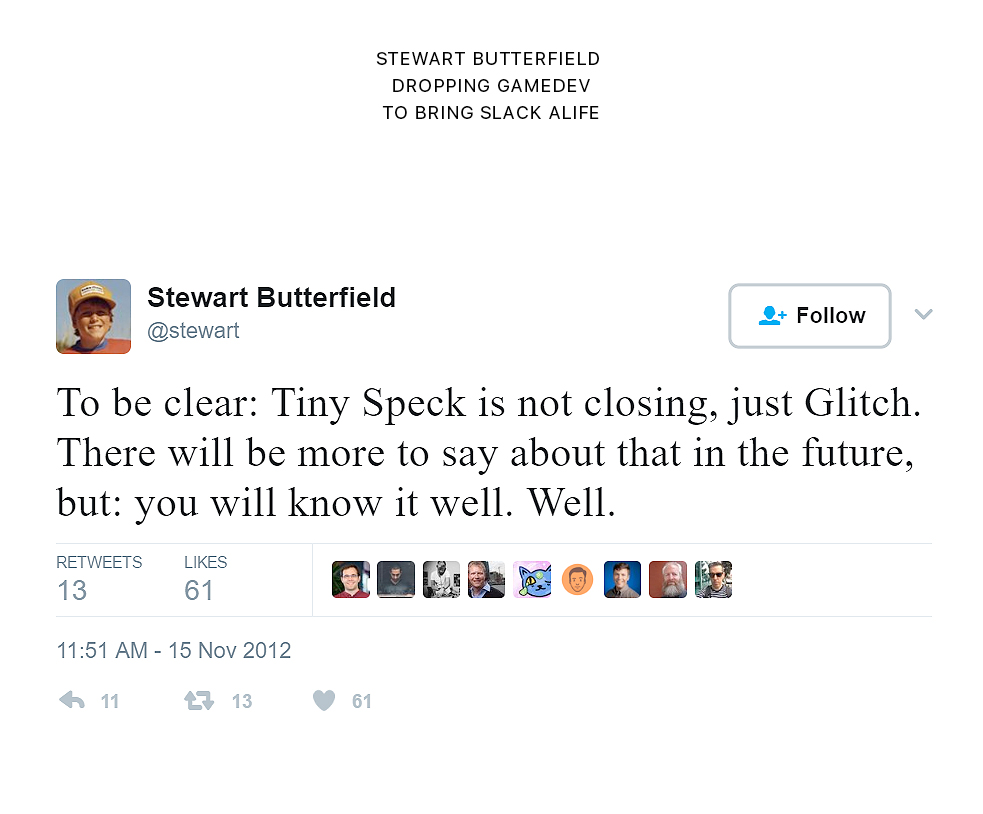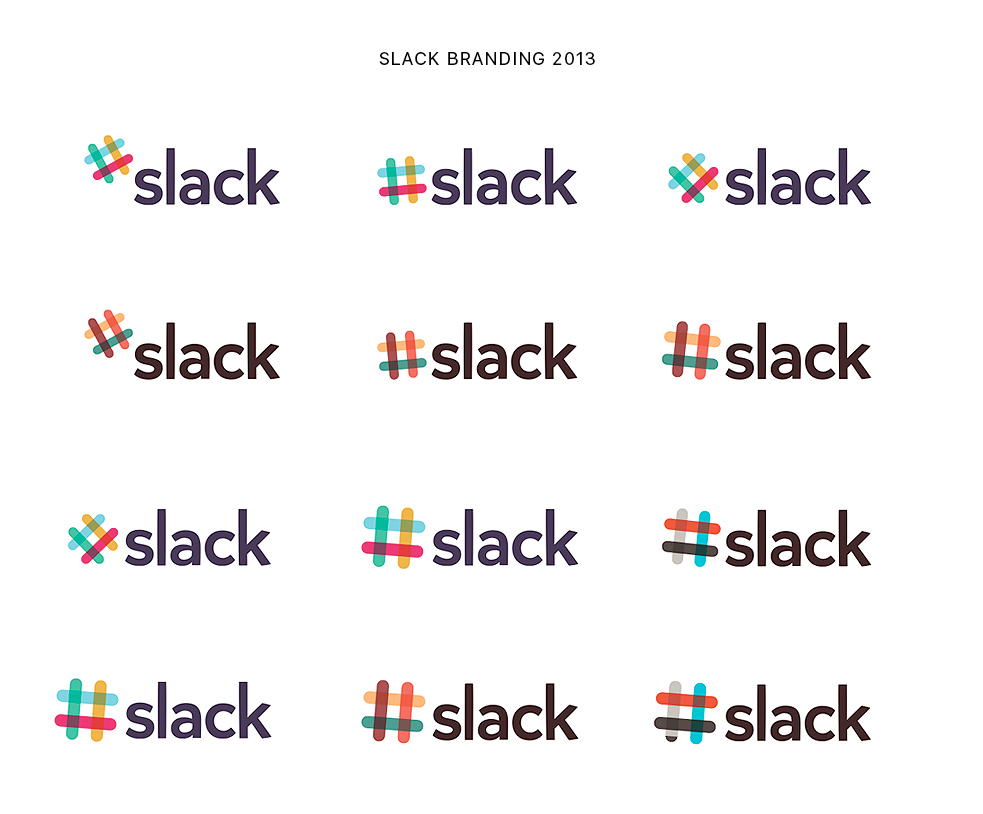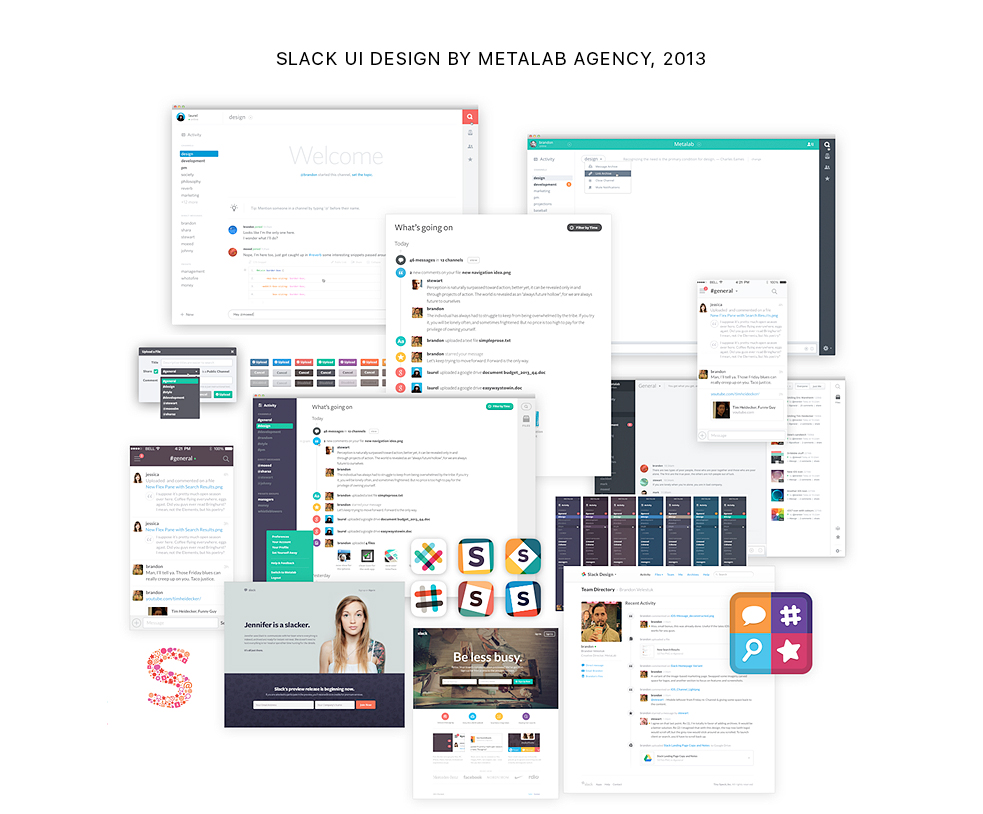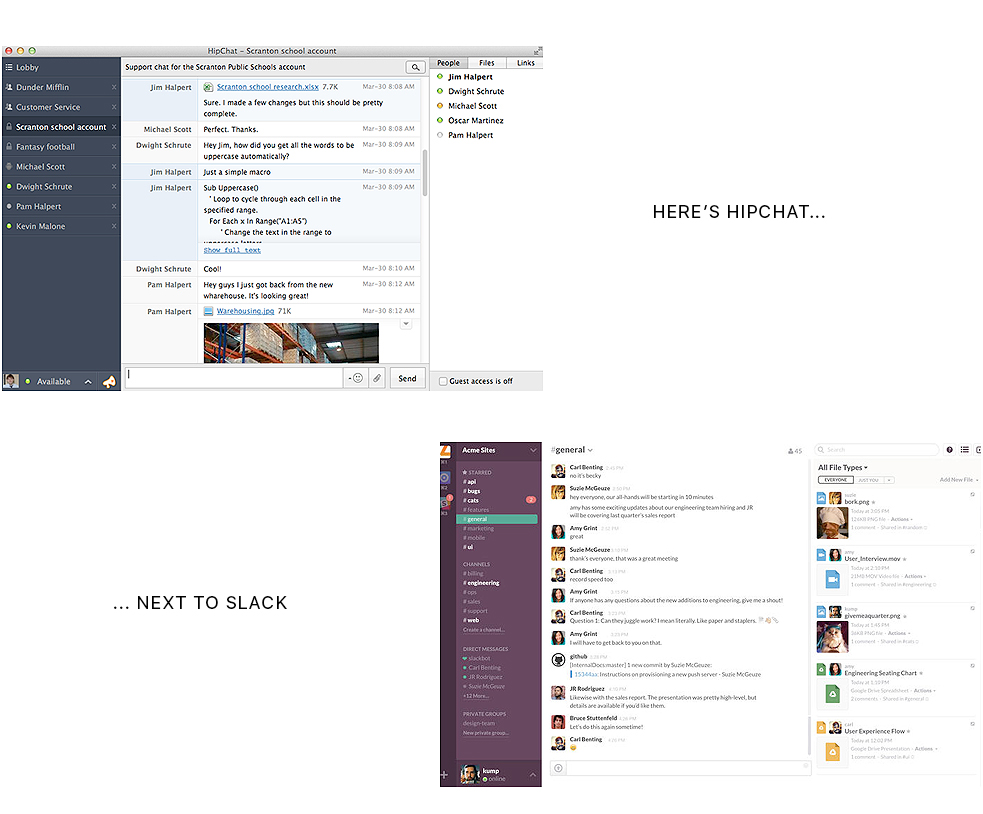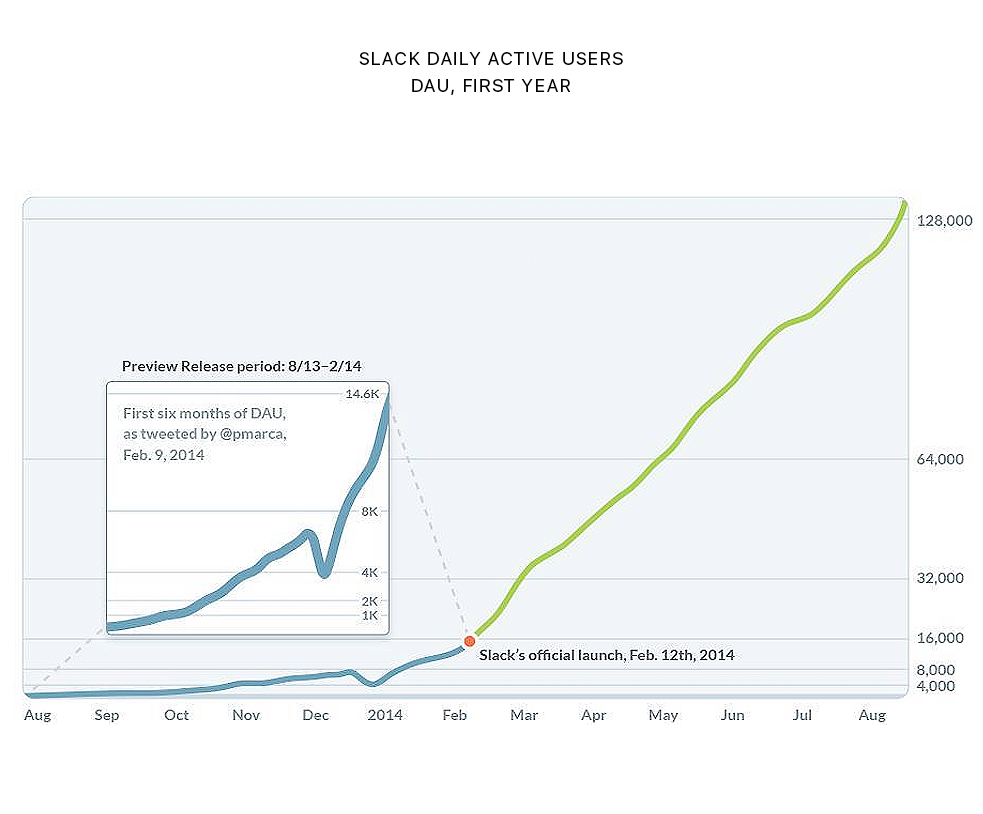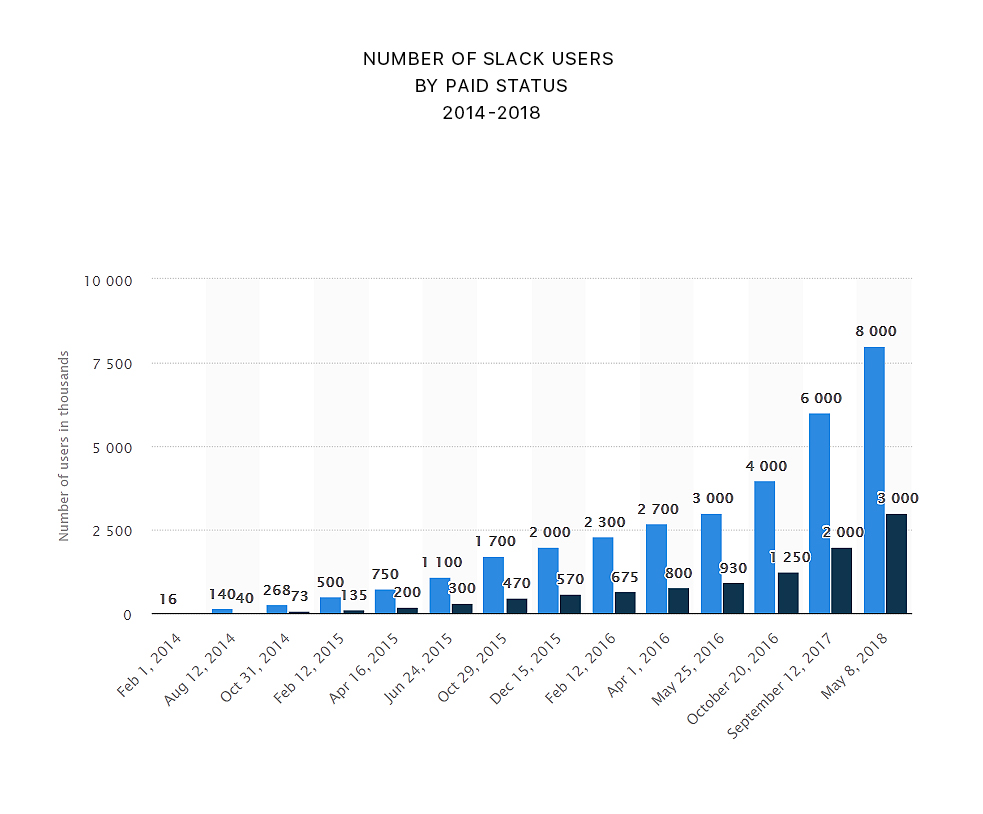
How Slack
Got Their First Users
Slack is a messaging platform for team communication
and collaboration. Founded in 2011 (Vancouver, Canada).
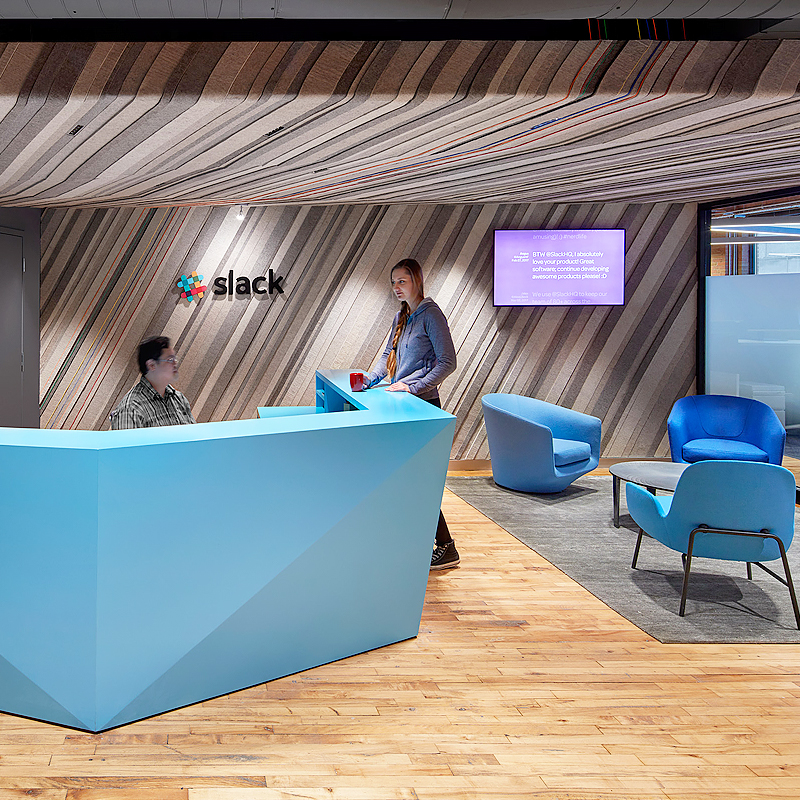
It was a second attempt for Stewart Butterfield to succeed in game dev industry since he left Yahoo after the company bought Flickr (he co-founded earlier) and his vesting period elapsed. Sadly, that second MMO he had been developing for two years failed as well as his first MMO several years before. The game world closed down by the end of 2012. Though, luckily the customized IRC they had been using for internal communication took the stage.
Next year, it took three months to develop a working prototype of their SaaS: IRC connected to file server, database, bug-tracking software, and other business platforms, as well as alerts and event tracking. Finally, the prototype of Slack emerged by April 2013.
It took another three months to convince some friends from 10 companies to use it. Thus, by August of 2013 Slack announced “preview release” (aka “private beta”). Because of the Butterfield’s previous experience with Flickr and Yahoo, Slack got plenty of press very early on, with TechCrunch, ReadWrite and VentureBeat each posting articles about the company (referring Slack as an “email killer”).


No wonder on the first day of the launch, Slack received 8,000 invitation requests and 7,000 within two weeks later. Finally released in February 2014, Slack became one of the fastest growing B2B application ever.
Retrospectively, besides the power of Butterfield’s fame, his industry connections and perfect timing, there are four famous growth hacks behind Slack’s success: Blue Ocean strategy, minimal features focus, freemium business model, fear of social isolation hook.
The Blue Ocean strategy implies defining new free-market space and marketing positioning your company (product, service or platform) as a leader. Though Slack was undoubtedly not the first office chat app (HipChat, Skype, Campfire, IRC, Hangouts), the need for centralized team communication was not yet satisfied. The major challenge to pull off the growth of Slack was to create a market where, despite a handful of competitors, one didn’t exist before.
There were about 25% of Slack’s early users that switched from another centralized messaging system mentioned above, yet, 75% of those early birds said that they were using nothing for internal communication. But they were using something (emails, SMS, Skype, calls, notes, etc.), they weren’t thinking of this as a category of software. The dire need for SaaS hubs for team communication wasn’t apparent to startups and entrepreneurs.


As the target audience didn’t quite understand why they need such software, Stewart appealed to the product training and market education as Slack’s sales focus. “Sell innovation, not a product” - have been Slack’s sales department foremost concerns since day one. Slack’s job was not just to build something useful, but also to understand what people think they want and then translate the value proposition of Slack into their terms. De-facto, they have been selling not software, but “better, more successful teams.”
To materialize that idea, Slack needed a good product with excellent UX (user experience). From UF (user flow) and the design of the interface (they hired MetaLab design company for that) to functionality and marketing, Butterfield’s company focused on the few (only three) things that proved most important to the product vision. That was the minimal features hack: it’s more important to do a few things really well than for every single thing to be perfect. That became the core of the next MVP (Minimal Viable Product) concept in later years.


After much discussion regarding Slack’s core features, the team finally decided to focus on search, leave-state synchronization, and file sharing. While not exactly flashy, these features made up Slack’s core functionality in a way that made sense to initial users and was pleasing for those who use the app all day.
Like many SaaS companies, Slack operates on a freemium model. And that freemium model that fueled bottom-up word of mouth growth. Since the launch, any uptick in users was due to word of mouth. They hired their first marketing person in 2014 (before that Butterfield had been doing all the marketing himself as he had a lot of relevant experience from Flickr and Yahoo).
However, there are two aspects of Slack’s freemium model which represents why that strategy might be treated as growth hacks.
First, more than 90% of early birds who submitted Slack never invited anyone or even started using the software. However, because one active team has an average of eight or nine members, they had enormous DAU (Daily Active Users). Even now, the company has more daily active users than teams ever created. They lose a bunch, but the ones that get to try it out stick with it. By November 2014, Slack’s free-to-paid conversion rate was 30%, and they had more than 73,000 Slack users paying for the premium service, which included a full message archive.

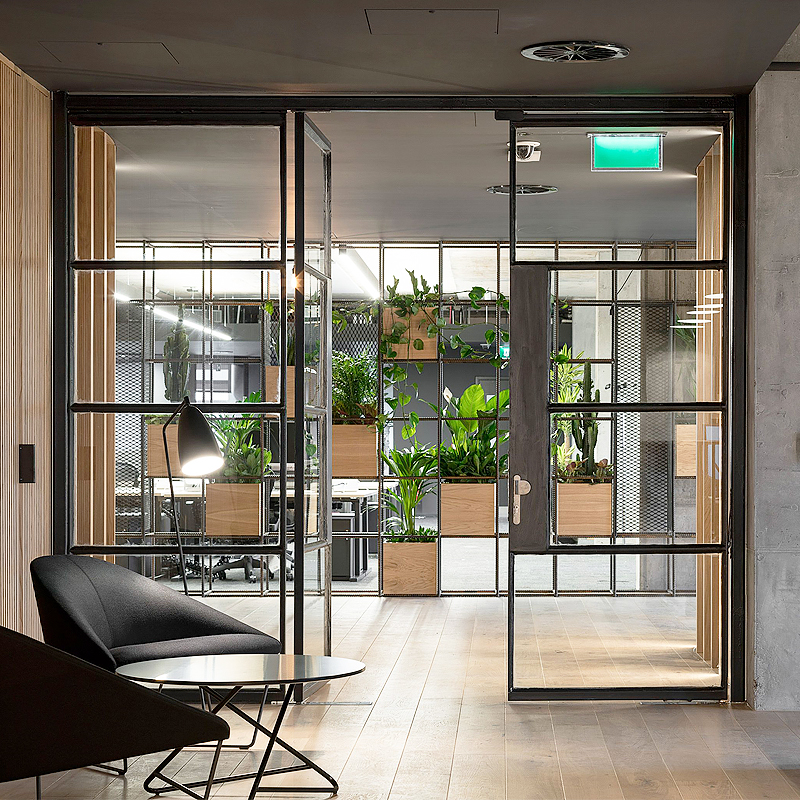
The second, less prominent part of the strategy was about “magic numbers” determination and usage. That Magic Numbers concept usually sheds light on who is using your product and how you can get them to keep using it. As it turned out, Slack’s magic number was 2,000: users who send 2,000 messages are much more likely to continue using and eventually to pay for the service.
That number helped them to calculate a historical messages limit for the freemium model. If you want to find a past post on Slack, it only gets you 10,000 messages back unless you start paying. Which means, if you didn't check Slack enough (which puts you social isolation), there's no way for you to see a conversation and drag yourself out of social isolation - unless you pay, of course.
The trick is the more people in your company, the faster you reach that 10,000 messages limit. For example, if each person in your company is posting 100 messages a day, and your team is 100 people in total, you already need to start paying to avoid social isolation and save company culture from failing.


Speaking about the social isolation hook, we cannot omit that ingenious growth hack. That gimmick is if you don’t follow Slack all the time you do not and cannot take part in the conversation with your team members anymore. And that results in the pressure of social isolation: if you don’t follow Slack all the time, other people reference or know stuff on Slack that you don’t know, and you’re left out. Within companies, it is crucial for one to inform one’s self about what’s going on, not only for job performance but also for job security and future ambitions. Slack plays into the social pressure to follow and post to the system 24/7.
Now after you started to follow Slack all the time the time of FOMO (Fear Of Missing Out) addiction has come. That addiction becomes unconscious stress, because you have the feeling you might miss something. That put Slack on the same level as email, Facebook and WhatsApp.
The final stage comes when Slack becomes your team’s single source of information. Everyone is now going all-in on Slack because of two foregoing reasons: more and more information is going into Slack (Slack has hundreds of integrations and more popping up each week) and the team is heavily invested there.


And before you even realize there’s no way out, Slack has become part of your company and your company’s culture. And then you find out you need to start paying. Brilliant.
Book a consultation
Hire me as your unfair advantage to leverage your startup's growth and traction!
HIRE ME ($300-500/h)